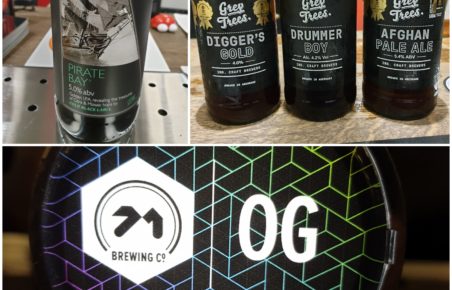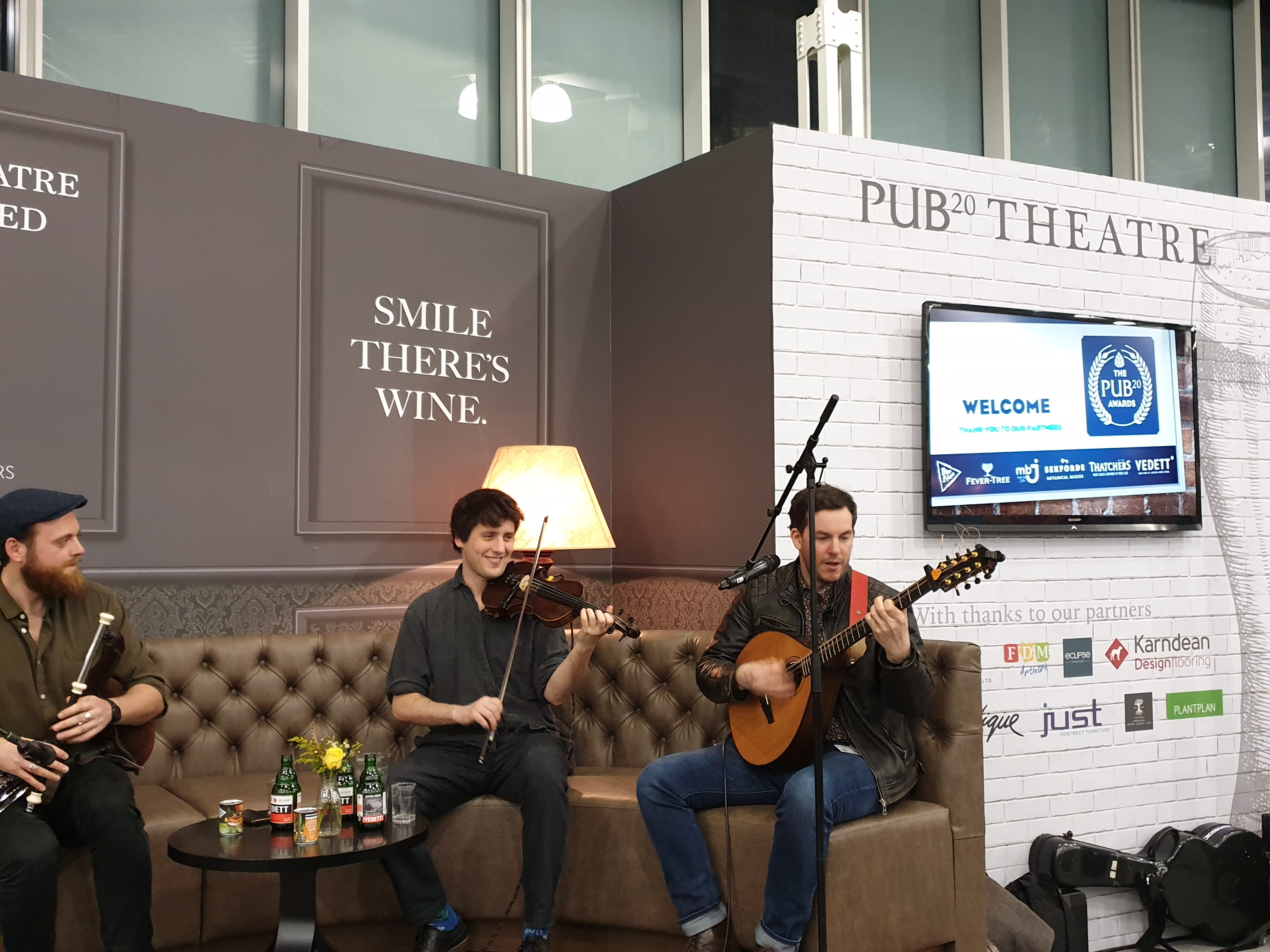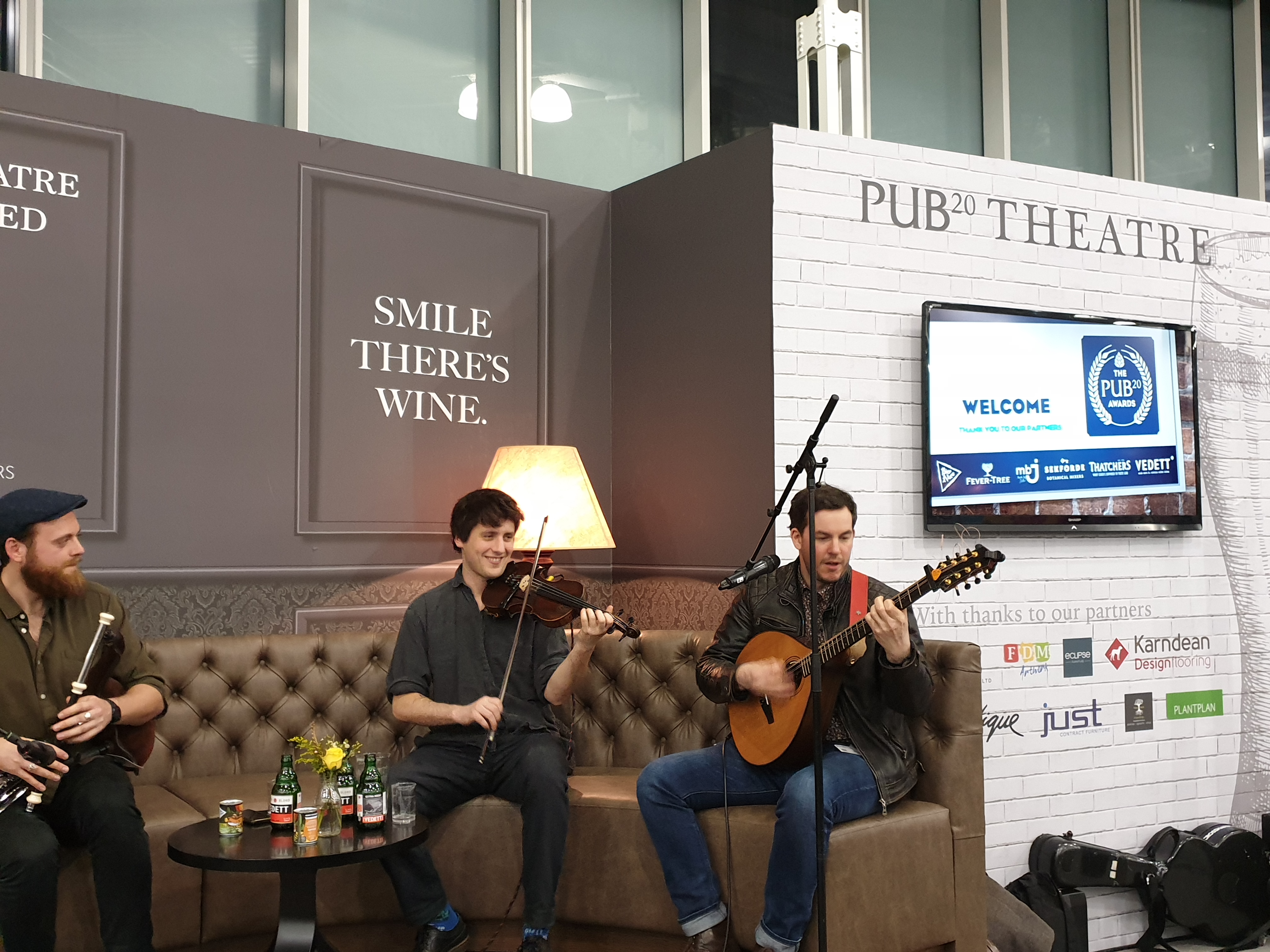The Whisky Business: Thoughts from The PUB Show 2020
The PUB Show is the only dedicated show for the UK Pub Industry. Now in its sixth year, it continues to attract visitors from across the industry – publicans, suppliers, journalists and many others.
Diverse products
This year’s show took place on 4th and 5th February at Olympia London and featured a range of beers, wines, spirits and soft drinks, in addition to bar snacks and equipment. There were several non-alcoholic options too, reflecting this growing trend. However, alcohol remains the key driver in the pub sector. So, it was no surprise to see a good selection of quality craft breweries and artisan distilleries present at the event.

Some of the top beers from PUB20
Beer highlights
Top beer highlight for me was Dundee’s 71 Brewing Outer Galactic Imperial Dry Hopped Pilsner. This was certainly an unusual expression, strong at 7.5% ABV, crisp and rich, malty yet balanced and very drinkable! Welsh breweries were well represented too, including Cold Black Label and their deliciously quaffable Pirate Bay Golden IPA (4.5% ABV). Grey Trees Brewery, Champion Beer of Britain runners-up for Afghan Pale Ale, were also at the show. They were previously included in Ryebeck’s review of the Great British Beer Festival 2019.
The Whisky Business
Talks and workshops are always a main feature and this year was no exception. Dawn Davies MW, Head Buyer of Speciality Drinks, gave a particularly insightful talk on the Whisky Business. A new generation of whisky drinkers is emerging. So, how can pubs tailor their offerings to better serve their customers?
Whisky regions: confusing terminology
By 2022, whisky is predicted to be a £2.4 billion market in the UK, but the category remains difficult for many consumers. As Dawn noted, they look at whisky in a similar way to wine. They see the names, descriptors and references to region, but don’t necessarily understand what these mean. Also, the only ‘terroir influence’ in whisky comes from the distillery itself, not from the soil or specific area. Not every Islay whisky, for example, is peated. Therefore, structuring a whisky list by area may not be the best method. There should be a more consumer-friendly way of doing this, one which also offers a contemporary, imaginative and better quality choice of whiskies.

Dawn Davies MW talking about the Whisky Business
Flavour’s the way
People often order beer according to the flavour profile they’re after – hoppy, bitter, sour etc. So that style of descriptive language does help to engage with the end user. Although The Whisky Exchange online arranges whisky into eight ‘flavour camps’, there are four main flavour groups:-
- Sherried whiskies: rich, full-bodied styles with a heavy sherry influence, like Glenfarclas.
- Fruity: probably aged in ex-Bourbon casks like a Balvenie.
- Smoky: for example, an Islay like Laphroaig.
- Light and floral: like Dalwhinnie or Japanese whiskies.
Using these flavour camps or styles with descriptions in bar, pub or restaurant menus has practical and educational value. It becomes easier for people to choose the type of whisky they want and helps them better understand the different styles.
Trends
Current trends can also be used to encourage new whisky drinkers, especially if they regard the spirit as too strong and intense.
The trend for lighter, low sugar and lower alcohol drinks is growing. Many people are now concerned with their alcohol intake. Highball cocktails are becoming more popular, but these don’t just have to be a gin and tonic. A whisky highball is a great alternative. It’s a long drink that’s light, fresh and easy-drinking! Rye whiskey and ginger is another good option, So, talking to consumers about flavour and flavour combinations like that can bring them in to the category.
For a current overview of whisky trends, have a look at this article on Ryebeck’s Industry Insight pages.
Points of difference
Engaging customers with a more creative offering is also important. There are many ways of doing this, such as:-
- Rather than a ‘Gin and Tonic’ list, try having a ‘Highball’ list with four different whiskies.
- Instead of choosing a standard blended whisky that every other bar, pub or restaurant sells, opt for a more boutique brand. Blended whiskies are particularly good for new consumers, because of the sweetness and roundness from the grain.
- Look outside Scotland and Ireland for a more interesting range of grain or blended whiskies. There are many US whiskies that aren’t Bourbons, so perhaps choose one from Texas or Vermont.
- Go international and stock whiskies from Taiwan, India, Japan etc.
Whisky has great potential
Dawn sees the spirits business as showing huge potential, with whisky being a strong category. “Consumers want knowledge. They want interest and they’re hugely engaged right now. We’re in the best time I’ve ever seen in the last twenty years. Whisky is super-exciting and interesting. So how do we move the consumer into whisky? How do we talk to them about it? We can do that through flavour and the different styles. This is super important when constructing a list. Have a couple of classics, but don’t be afraid to be a bit quirky! Have fun with your whisky list and your customers will have fun with you.”
Sound advice from a leading expert in the alcohol industry.
Author: Robin Goldsmith of The Write Taste.






